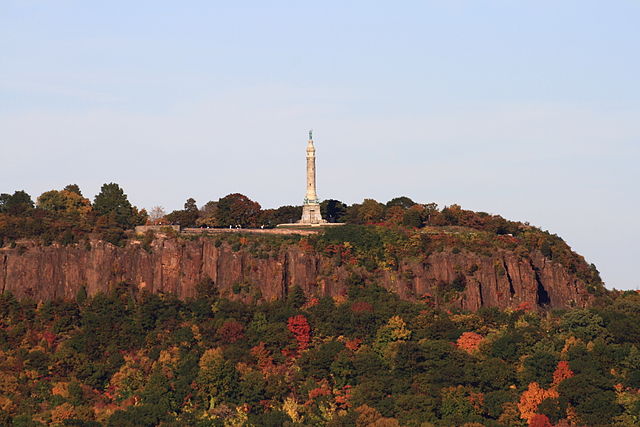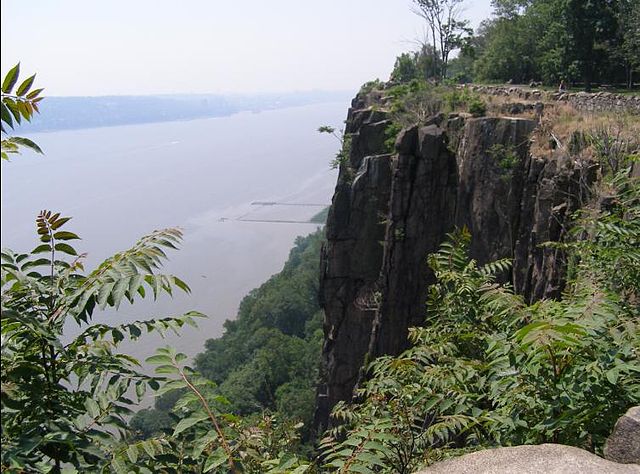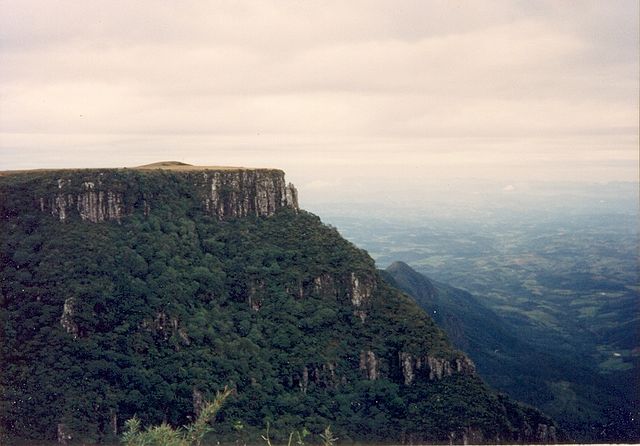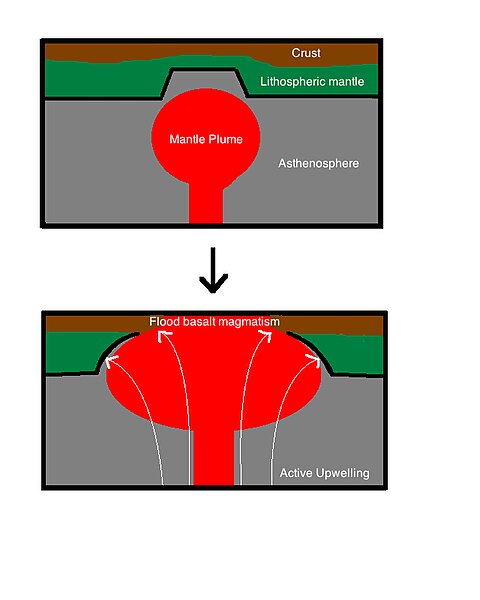Trap rock, also known as either trapp or trap, is any dark-colored, fine-grained, non-granitic intrusive or extrusive igneous rock. Types of trap rock include basalt, peridotite, diabase, and gabbro. Trap is also used to refer to flood (plateau) basalts, e.g. the Deccan Traps and Siberian Traps. The erosion of trap rock created by the stacking of successive lava flows often created a distinct stairstep landscape from which the term trap was derived from the Swedish word trappa, which means "stairway".
The East Rock trap rock ridge overlooking New Haven, Connecticut, U.S.
Trap rock forming a characteristic pavement, Giant's Causeway, Northern Ireland
Trap rock cliff overlooking the Hudson River from an overlook on the Hudson Palisades in Bergen County, New Jersey, U.S.
Trap rock forming a characteristic stockade wall, Giant's Causeway, Northern Ireland
A flood basalt is the result of a giant volcanic eruption or series of eruptions that covers large stretches of land or the ocean floor with basalt lava. Many flood basalts have been attributed to the onset of a hotspot reaching the surface of the Earth via a mantle plume. Flood basalt provinces such as the Deccan Traps of India are often called traps, after the Swedish word trappa, due to the characteristic stairstep geomorphology of many associated landscapes.
Moses Coulee in the US showing multiple flood basalt flows of the Columbia River Basalt Group. The upper basalt is Roza Member, while the lower canyon exposes Frenchmen Springs Member basalt
Ethiopian Highlands basalt
Parana traps
Plume model of flood basalt eruption








